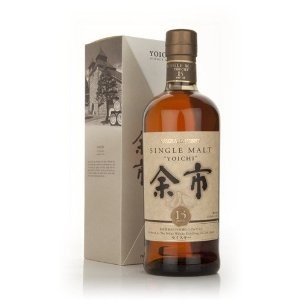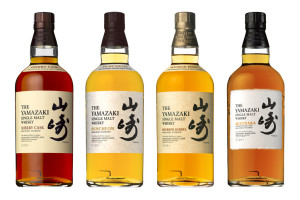The Big Whiskey Pinch Isn’t In Scotland Or Kentucky, But Japan
By Richard Thomas

What a real shortage looks like:
this Yoichi whisky will be discontinued
(Credit: Anchor Distilling)
Arguably the hottest ticket in the world whiskey scene today is Japanese whisky, buoyed by a rising tide of attention in recent years that culminated with it knocking Scotch whisky off the top slots in many rankings. This interest from international whiskey enthusiasts has been mirrored at home, with many Japanese discovering their domestic whisky for the first time thanks to the television drama Massan, in a surge similar to the Mad Men/Justified effect in the United States.
Big Thirst, Small Cup
All that buzz shows in the hard numbers. Nikka saw its sales rise by 45% in the European market alone last year, and this being the year after their rival Suntory saw a similar 44% jump in the U.S. market. This spike in international sales contrasts sharply against the picture of less than a decade ago, when hardly anyone but a handful of knowledgeable diehards knew about the quality of Japanese whisky.
Yet that sudden and spiraling surge in popularity takes place in what is essentially a tiny whisky sector. Japan is the world’s fifth-largest producer of whiskey, the smallest of the five traditional countries (Canada, Ireland, Japan, UK and US), and that production is more oriented towards premium and super premium expressions, generally taking longer to mature. The result is an enormous amount of heat focused on a relatively small, relatively slow to replenish pool, and that pool is boiling.
Compare Japan to Ireland. Ireland is fourth among world whiskey’s “Big Five” countries, and the two countries are similar in terms of scale. Rounding things off, for every 20 bottles of whiskey sold in the world, one is Irish and one is Japanese, and both countries are currently experiencing a dramatic surge in whiskey sales.
The difference starts with 70% of all Irish whiskey sold being Jameson. This no age statement (NAS) whiskey averages about five to seven years old, and is made at a distillery that saw €200 million of investment in 2012, more than doubling capacity. Another 16% comes from Tullamore Dew, another NAS, mass market whiskey. The uber-hot Japanese whiskies are in upper tier, rather than mass market, categories, and the Japanese were much slower to invest in expanding production. Thus the Irish got out in front sooner while facing shorter maturation times for the bulk of their whiskeys, relative to the Japanese.
This Is What A Shortage Looks Like
Five years ago, the shortage storyline was that the Chinese would drink up all the world’s Scotch, and today it is that all of Kentucky’s bourbon is rapidly being guzzled down. Yet the hard evidence for shortages in these sectors is relatively mild compared to what is brewing in Japan.
In April, Suntory announced price hikes of a staggering 20 to 25% for 39 of its whisky expressions. Nikka took the opposite tack to cope with its supply problems, eliminating 17 expressions in a major shake-up of its product line. Some of these are to be replaced by NAS whiskies, while others are to be discontinued outright.
Imagine if Jim Beam and Brown-Forman announced they were hiking prices by a quarter or converting everything in their line-up to NAS, and they were doing it all once. That is what a genuine shortage—the inability to cope with demand without extreme measures—looks like, and that is what is happening right now in Japan.
 The Whiskey Reviewer A World of Whiskey, Poured Every Weekday
The Whiskey Reviewer A World of Whiskey, Poured Every Weekday


I guess I should be looking around for some Japanese whisky, before the investors snap it all up and the prices go through the roof.